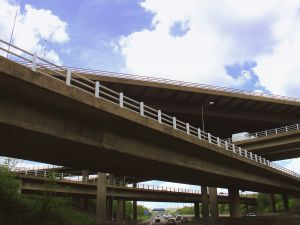This week the United States Court of Appeal for the Ninth Circuit decided three cases involving city ordinances relating to billboards. Such ordinances are commonly challenged under the First Amendment as infringements of free speech rights.
The major issues discussed in these cases include:
In the three cases, the Ninth Circuit evaluated similar ordinances prohibiting offsite billboards. The court, however, had different holdings for each case.
First, in Desert Outdoor Advertising v. City of Oakland[1], the court evaluated the City of Oakland’s refusal to grant permits to display three billboards. Desert Outdoor Advertising (“Desert”) had attempted to erect signs at three locations — two of which were freeway visible and were commercial advertising unrelated to the premises. Desert applied for a variance to erect a billboard; however, the city denied Desert’s request.
In its defense, the city relied upon several city ordinances. The first ordinance prohibits signs adjacent to and viewable from freeways.[2] The ordinance provides exceptions for signs limited to identifying the name of the person, firm or corporation occupying the premises and the type of business; signs limited to the name of the product manufactured on the premises; and signs not exceeding six square feet pertaining to the lease, sale, hire, or display of the building premises.
In addition, a second ordinance bans construction of new advertising signs anywhere within the city. This ordinance, however, allows variances when strict compliance would result in practical difficulty or unnecessary hardship or discrimination.[3]
The Ninth Circuit held that the city’s ordinances were constitutional. According to the court, the first ordinance was constitutional because the ordinance focuses exclusively on commercial speech, and it did not limit noncommercial speech. The ordinance focuses on “advertising,” which does not encompass noncommercial speech. The court also found the second ordinance constitutional because it simply provided guidance for an official’s discretion whether to grant a variance or not.
Second, in Outdoor Media Group v. City of Beaumont [4], the court examined the city’s decision to deny a conditional use permit to erect four billboards. The city denied the permit because the signs “would result in excessive, undue, and adverse visual intrusion in the character” of the adjacent freeways. After this denial, the city adopted an ordinance that prohibited new billboards. The prior ordinance allowed billboards with a permit. The Director of Planning was required to review permits based upon the city’s intent and purpose to avoid overhead clutter and enhance the economic value of the community and prohibited signs that advertised or informed in any manner businesses, services, goods, persons, or events at some location not upon where the sign is located.
The court found that the old ordinance violated the First Amendment because it may have prohibited noncommercial speech. The court noted that the old ordinance would have prohibited political messages that were not related to the site where the sign was located.
Finally, in Get Outdoors v. City of San Diego, the Ninth Circuit evaluated a City of San Diego ordinance prohibiting new billboards with off-premises messages.[5] The court looked at the size and height restrictions in the city ordinance. Size and height ordinances are evaluated as content-neutral time, place, and manner regulations that must be narrowly tailored to serve a significant government interest and must leave open ample alternative channels of communication. The court found that the city’s restrictions were not substantially broader than necessary and do not unconstitutionally close alternative avenues of communication.
In sum, ordinances prohibiting offsite billboards are unconstitutional when they limit both commercial and noncommercial speech. Without more detailed language, ordinances prohibiting offsite billboards are overbroad; thus, these ordinances must be expressly limited to commercial speech. Further, when there is a method for a variance or conditional use permit, an official must have parameters to make a decision and cannot be allowed unbridled discretion. As a result, officials involved in this area of the law should keep abreast of the situation and act accordingly.
[1] Desert Outdoor Advertising v. City of Oakland 2007 DJDAR 16324.
[2] Oakland Municipal Code § 15016.
[3] Oakland Planning Code Chapter 17.104, § 17.104.010.
[4] Outdoor Media Group v. City of Beaumont 2007 DJDAR 16455.
[5] Get Outdoors v. City of San Diego 2007 DJDAR 16448.
